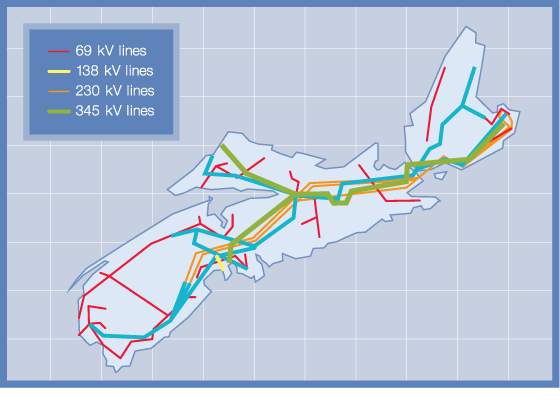Nova Scotia’s transmission and distribution system consists of 31,800 kilometres of power lines stretching across roughly 29,500 transmission towers, 500,000 distribution poles, and 190 substations to bring electricity from power plants to customers.
Electricity carried by transmission lines is sent through distribution substations with transformers that convert the electricity down to a lower voltage level that is safe for delivery to homes and businesses. 26,500 kilometres of distribution lines then carry the electricity to localized areas and connect to individual meters on homes and businesses.
The Maritime Link is part of a larger strategy to address the growing demand for more renewable energy. It enables the transmission of clean, renewable and reliable hydro electricity from Newfoundland and Labrador to Nova Scotia and beyond.
A 350-megawatt capacity transmission line connects Nova Scotia with New Brunswick, enabling the import and export of electricity with neighbouring jurisdictions. The Nova Scotia system operator may import electricity when it is needed and can be purchased at a lower price than it can be generated inside the province, or may export electricity when it can be sold at a price that lowers costs for Nova Scotia Power customers.




